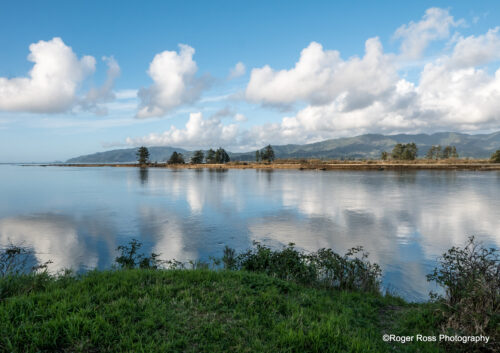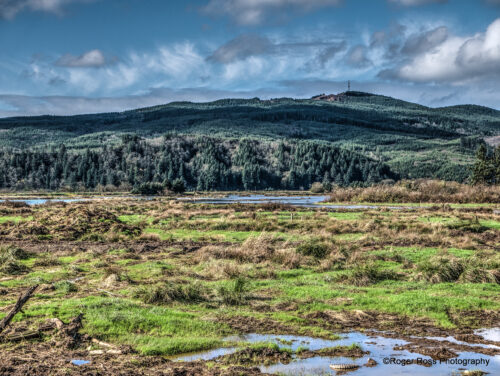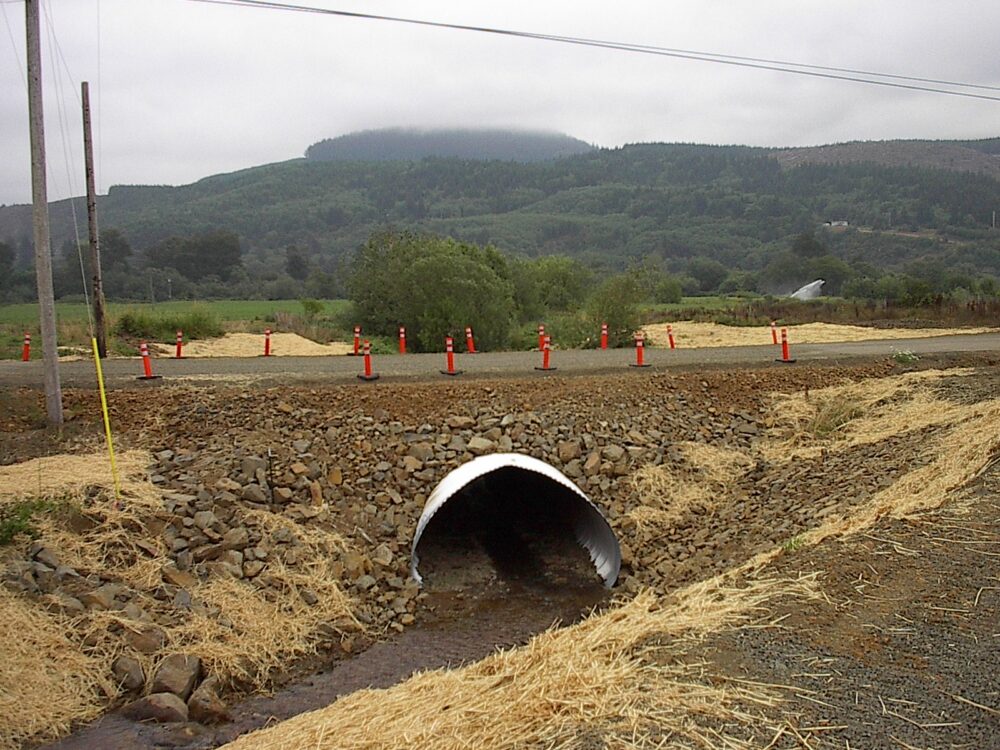Progress

- Pre-assessment (Completed)
- Project Design (Completed)
- Project Started (Completed)
- Project Finished (Completed)
- Monitoring Active (In Progress)
Restoring Estuarine Function at Southern Flow Corridor – Landowner Preferred Alternative (SFC)
At the head of Tillamook Bay, SFC encompasses 642 acres at the confluence of the Tillamook, Trask, and Wilson Rivers. This collaborative project brought together federal, state, and local partners and was designed to reduce flooding, provide economic benefits to the community, and restore habitat for native fish and wildlife.
Designed to help alleviate flooding in the town of Tillamook and enhance ecosystem services in the estuary, SFC is one of the largest tidal wetland restoration projects in the Pacific Northwest. In 2016, the tide gates and dikes restricting tidal inundation were removed, restoring natural hydrology to channels and emergent wetlands; engineering crews also excavated remnant and new tidal channels. Since 2013, a team of researchers monitored fish populations, hydrology, soils, vegetation, and soil carbon at SFC and nearby reference wetlands. Preliminary results, some of which are presented here, will inform monitoring strategies that recognize a more natural timeline as adult salmon returns increase and marsh soil accretion occurs over coming years and decades. Additionally, the partners agreed to a 10-year management plan.
Creating Habitat for Salmon.
Before restoration, chum salmon were absent, and Chinook salmon were nearly absent from SFC channels. After the first two years of project implementation, six times as many chum salmon and approximately twice as many juvenile Chinook were found in SFC channels compared to reference areas. While ESA-listed young-of-the-year coho salmon catches were highly variable, they used SFC habitat before and after restoration; no restoration response has yet been detected. It is anticipated that salmonid use of this new estuarine habitat will continue as SFC channels and vegetated wetlands develop and provide improved rearing habitat, benefiting populations regionally.

Roger Ross Photography
Developing wetland soil and native vegetation.
Invasive reed canary grass and other freshwater and non-native plant species dominated SFC before restoration. In the three years since project implementation, much of this vegetation died back and brackish wetland species established. Regular tidal inundation at SFC caused changes in surface soils and groundwater, with higher water tables, and saltier and less acidic soils. High soil deposition rates in many areas of SFC after restoration suggest the site’s wetlands may return to the mature high marsh habitat historically found here.

Roger Ross Photography
Carbon Sequestration
The uptake and storage of carbon in soil which prevents it from entering the atmosphere where it can contribute to global warming– is an important function of tidal wetlands. Similar to nearby reference wetlands, SFC soils store large amounts of carbon, implying the restoration site will potentially increase carbon storage over the coming decades. To better understand SFC’s potential net climate effects, we measured uptake and emissions of greenhouse gases (GHG) at SFC and nearby reference wetlands and farmlands. Nitrous oxide emissions were low in all land uses. Methane emissions were low in farmed areas and reference marshes, and higher at SFC because it tends to be wetter. As tidal channels develop and allow water to move off-site more rapidly, and as soil accretion shifts the site higher in the tidal frame, we anticipate SFC wetlands will have lower methane emissions than they do currently.

Roger Ross Photography


